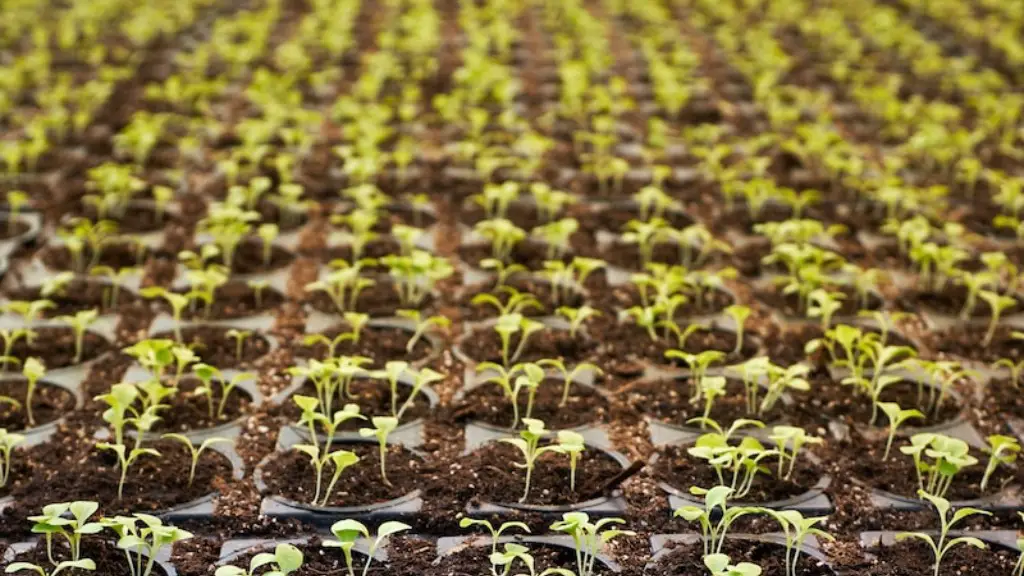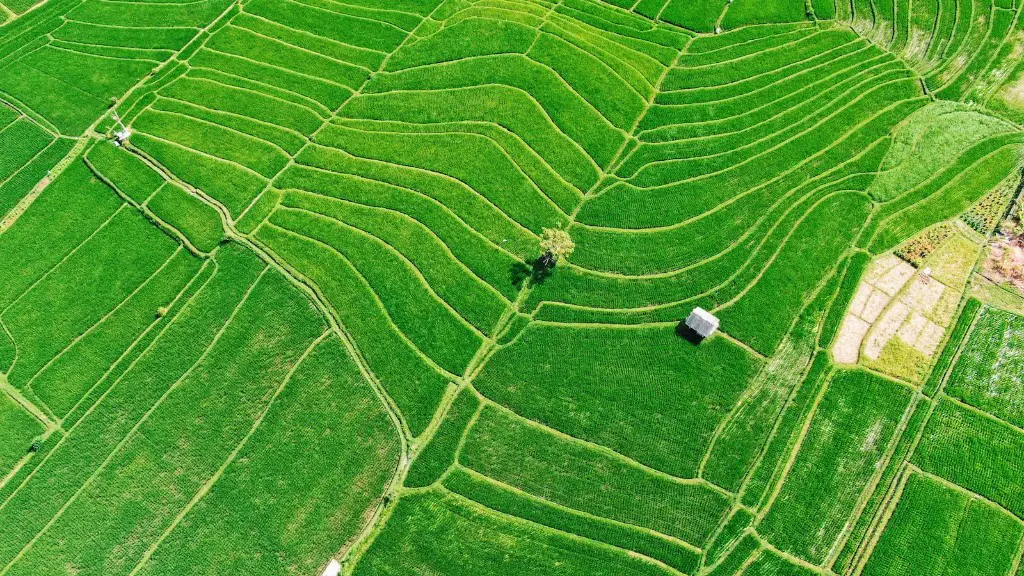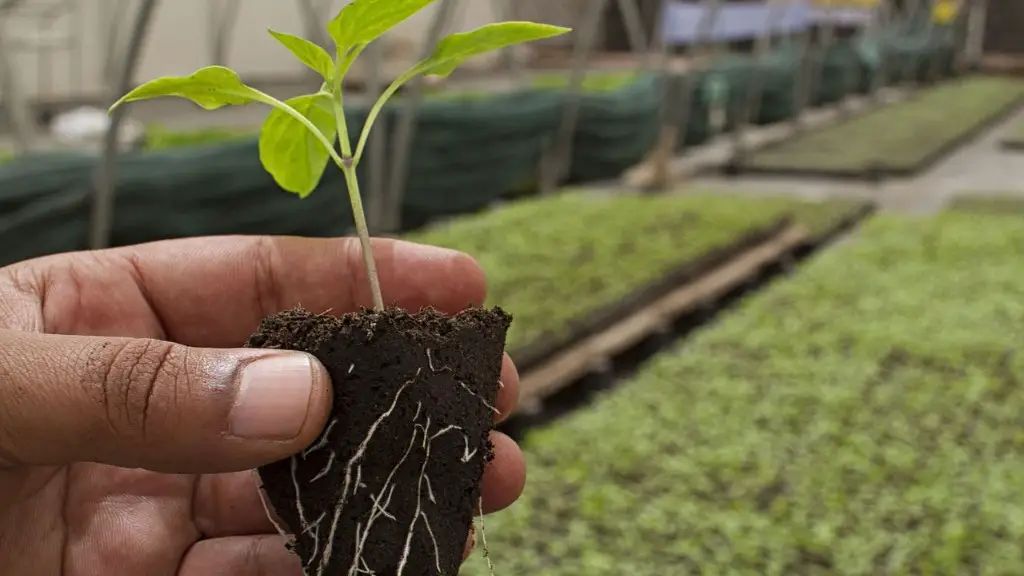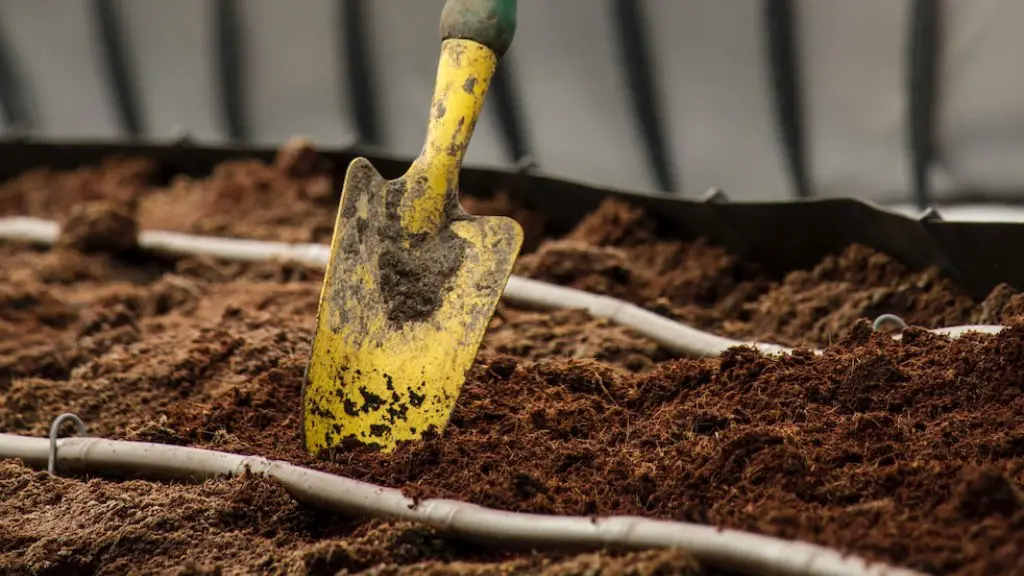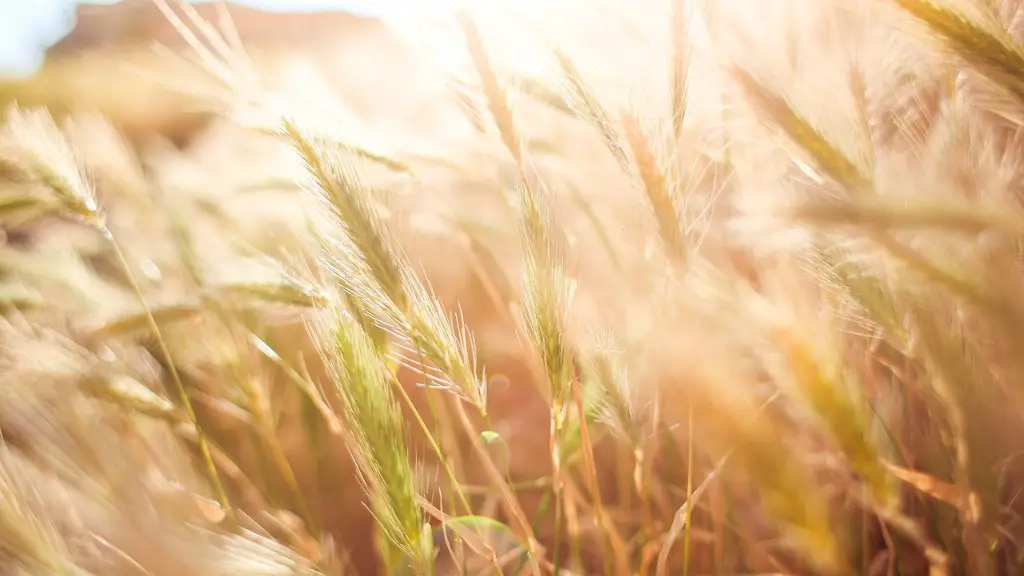Agriculture is an industry involving the production of animals, plants, or food on a large scale. It often involves large-scale planting, fertilizer application, irrigation, crop rotation, and so on. Horticulture, on the other hand, is the cultivation of plants for food production and the landscape. It includes smaller-scale efforts such as flower gardening, vegetable growing, and fruit production.
Both practices have the potential to make profits, but their focuses differ. Farming is typically about producing food for the market, and as such, farmers have to produce as much food as possible in the shortest time frame. Horticulture is about producing food for personal consumption and pleasure. Rather than mainly focusing on yield, farmers in this field aim to create high quality crops. Consequently, sustainable practices and processes are often used to ensure the quality of the outcome.
One of the main differences between agriculture and horticulture is the timeframe. Agriculturists often need to wait a long duration before the yield is ready, whereas horticulturists can produce a crop much faster. This differs across different types of crops, as some require a longer time to mature than others. Many horticulture projects optimise the growth rate of their plants, allowing them to make a faster return on their investment. Agriculture, by its very nature, often has a long and variable growing season.
Another important distinction between the two practices is their production methods. Agricultural production is characteristically mechanised, with machines and large-scale operations being used to maximise yields. This can involve using large-scale machinery to plough fields, sow seeds, and harvest crops. Horticulture, however, relies heavily on manual labour, with people tending to and caring for plants often by hand. Due to this, horticulturists need to possess a greater understanding of the environment and its many intricacies.
Finally, the output of agricultural production tends to be highly processed for sale in retail outlets, whereas horticulturists typically focus on providing fresh produce through community farms or local markets. This difference in approach has impacted the kinds of foods we buy and how we access them, providing us with an abundance of fresh and processed foods.
Soil Management in Agriculture and Horticulture
Soil management is an important factor in any agricultural or horticultural endeavor. Agriculture requires large amounts of soil to be able to produce an abundance of crops. This soil needs to be managed in order to keep it healthy and productive. This means soil needs to be amended and fertilized to ensure it has the proper nutrients for plants to thrive. For example, farmers may need to add lime to the soil to raise its Ph balance or add particular fertilizers for specific crops.
Horticulture, on the other hand, does not require large plots of land, and thus does not require the same amount of soil management. Horticulturalists are able to create raised beds and container gardens to grow crops in smaller spaces, which decreases the amount of soil that needs to be managed. Additionally, certain crops and plants may require smaller amounts of soil, allowing them to be grown in locations that were once thought to be unsuitable for cultivation.
Soil management for both practices involves applying the appropriate compost and fertilizer for the type of crop being grown. For agriculture, this often means large-scale fertilizer applications and advice from agronomists, while in horticulture organic compost can be used to ensure a natural soil environment and increased yields. The level of soil management differs between the two practices, however, horticulturists may be able to better manage smaller plots of land due to the lower amount of soil that needs to be maintained.
The Impact of Climate Change
Climate change is having a major impact on both agriculture and horticulture. The extreme weather that has become so common in recent years, such as floods, droughts, and heatwaves, can have serious impacts on crops. In agriculture, rainfall over extended periods of time can cause soil to become sodden, flooding the land and leading to the destruction of crops. This can lead to a decrease in yield, as plants are unable to develop effectively in the conditions.
Horticulture is also being affected by the changing climate conditions, however, horticulturists have found ways to mitigate the impacts. Climate-resistant fruits and vegetables have been developed as a way to help ensure continuity in the face of extreme weather. Additionally, some plants are being bred for their resistance to particular conditions, such as droughts and floods, making them more resilient to changes in the environment.
The rising levels of carbon dioxide in the atmosphere have also impacted both agriculture and horticulture. This can have an adverse effect on plants, as higher levels of carbon dioxide can lead to increased amounts of water use in crops and a decrease in nutrient availability. This can have a detrimental effect on the quality of the food being produced, reducing its nutrient density and shelf life.
Crop selection is also becoming a more important factor in ensuring the success of agricultural and horticultural practices. As climate conditions become more extreme and unstable, certain crops may no longer be suitable for certain climates. As such, it is important to select suitable crops and adjust production methods to ensure they are able to survive in varied climates.
Pest and Disease Management
Pest and disease management is an essential part of both agriculture and horticulture. Diseases and pests can cause significant damage to plants, leading to reduced yields and, potentially, to the destruction of crops. For example, weeds can reduce the productivity of agricultural land, as they compete with the crops for resources. Similarly, fungal diseases can cause them to become diseased or die, leading to a decrease in yields.
In order to prevent the spread of pests and diseases, both practitioners need to understand their methods of transmission and the best way to combat them. This can include the use of chemical treatments, such as fungicides and insecticides, as well as more natural methods such as biological pest control. Physical barriers and traps can also be employed to limit the spread of pests and diseases.
In addition to preventing the spread of pests and diseases, it is also important to manage the land in order to promote healthy growth and increase yields. This means ensuring that soil is well-drained, that there is appropriate food and water, and that plants are placed in suitable locations. The use of mulch, crop rotation, and companion planting can also help to keep pests and diseases under control.
Finally, it is important to carefully monitor crops to ensure that any issues are identified and addressed quickly. Regular inspection of crops can help to identify any problems early on, allowing them to be dealt with before they become more serious. Disease management protocols should also be put in place to ensure that any potential issues are handled quickly and effectively.
Livestock in Agriculture and Horticulture
Livestock plays a large role in both agriculture and horticulture. In agricultural practices, livestock are often used to provide labor, in addition to providing food. These animals may include horses, cows, and sheep, as well as other animals such as pigs or chickens. They can be used as a source of food, either through their meat or through the sale of their products such as eggs or milk. Livestock can also be used to provide fuel, either through their manure or through the production of biogas.
Horticulture also commonly uses livestock for various purposes. Livestock in horticulture may be used as a source of draft power, such as with horses. Additionally, they can be kept as a source of food, be it for eggs, milk, or meat products. Livestock can also be used to provide manure or biogas to use as fertilizer or fuel. Additionally, they can be used in companion planting or as pest control, as their presence can limit the spread of certain pests.
When managing livestock, it is important to take into account how the animals will affect the land. For example, overgrazing can cause soil erosion, leading to reduced yields or complete destruction of soil health. It is also important to ensure that livestock is kept in healthy conditions, as diseases can spread easily between them and to plants.
Livestock can also provide the benefits of recycling nutrients. Manure from the animals can be used as a natural fertilizer, providing the soil with essential nutrients for plants to thrive. The manure can also be used to create biogas for fuel, providing an alternative source of energy.
Market Access and Sales in Agriculture and Horticulture
Agriculture and horticulture provide food and other products for sale at markets, both domestically and internationally. In order to access these markets and sell their products, agricultural and horticultural practitioners need to understand the rules and regulations that govern these markets and how to navigate them. They also need to be aware of their pricing structure, as prices can vary significantly across different markets.
For agricultural practitioners, marketing and selling the produce is typically the responsibility of the farmer or grower. For large-scale producers, this can include selling the produce to wholesalers or distributors, either through contracts or at auction. For smaller scale producers, marketing and selling produce can be done through farmers’ markets or direct to consumers via an online platform.
Horticulturists often focus on selling directly to consumers. This can include selling via farmers’ markets or through an online platform, such as a website or social media. Selling directly to consumers can often provide higher profits, as the price per unit can be higher than that of selling to wholesalers. Additionally, the horticulturist is often able to establish stronger relationships with the consumers, providing them with reassurance and trust in the quality and safety of their products.
When marketing and selling produce, it is important for practitioners to consider the quality of the product, as well as the way it is packaged and presented. Presenting a product that is of high quality and is packaged well can help to attract more customers and increase the demand for a particular product. Additionally, producers should understand the importance of pricing their products correctly, as this will help to ensure that they do not overprice or underprice the product compared to similar products in the market.
Harvest and Storage
Harvesting and storage are key components of both agriculture and horticulture. When it comes to harvesting, the timing of the harvest is important, as crop quality can be impacted if the crop is not harvested at the correct time. For example, for fruits and vegetables, harvesting them at the wrong time can lead to spoilage and reduced shelf life. Similarly, for grains, harvesting too early can lead to a decrease in quality and yield.
Once the crop is harvested, it needs to be stored and preserved properly. In agriculture, crops can be stored for either short-term or long-term storage. For example, grains may be stored for months in silos, while fruits and vegetables are typically stored for a shorter duration. The storage conditions are important, as inappropriate temperatures and humidity levels can lead to spoilage and decrease the shelf life of the product.
In horticulture, produce typically needs to be stored in small batches due to its shorter shelf life. Fruits and vegetables are often stored in cool, dark places, such as cellars and pantries. Post-harvest treatments may also be used to maintain the quality of the produce, such as washing or waxing. Additionally, certain produce may be preserved through additional treatments, such as freezing or canning, to allow them to be stored for longer periods of time.
Storing and preserving crops is essential for both agriculture and horticulture. Proper storage and preservation can help ensure that the quality and nutritional content of the produce is maintained, leading to increased food quality and safety.
